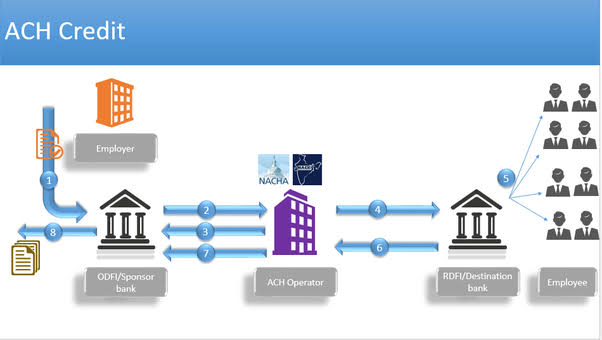What is GDP? - All you need to know about Gross Domestic Product
Gross domestic product is the best way to measure a country's economy. GDP is the total value of everything produced by all the people and companies in the country. It doesn't matter if they are citizens or foreign-owned companies. If they are located within the country's boundaries, the government counts their production as GDP.
How to Calculate Gross Domestic Product
The components of GDP are:
Personal Consumption Expenditures plus Business Investment plus Government Spending plus (Exports minus Imports).
Now that you know what the components are, it's easy to calculate a country's gross domestic product using this standard formula: C + I + G + (X-M).
Types of GDP
There are many different ways to measure a country's GDP. It's important to know all the different types and how they are used.
Nominal GDP
This is the raw measurement that includes price increases. The Bureau of Economic Analysis measures nominal GDP quarterly. It revises the quarterly estimate each month as it receives updated data. In 2016, the nominal U.S. GDP was $18.625 trillion.
Real GDP
To compare economic output from one year to another, you must account for the effects of inflation. To do this, the BEA calculates real GDP. It does this by using a price deflator. It tells you how much prices have changed since a base year.
The BEA multiplies the deflator by the nominal GDP. The BEA makes the following three important distinctions.
Income from U.S. companies and people from outside the country are not included. That removes the impact of exchange rates and trade policies.
The effects of inflation are taken out.
Only the final product is counted. For example, a U.S. footwear manufacturer uses laces and other materials made in the United States. Only the value of the shoe gets counted. The shoelace does not.
Real GDP is lower than nominal. In 2016, it was $16.716 trillion. The BEA provides it using 2009 as the base year in the Interactive Tables, Table 1.1.6. Real Gross Domestic Product Chained Dollars.
Growth Rate
The GDP growth rate is the percent increase in GDP from quarter to quarter. It tells you exactly how fast a country's economy is growing. Most countries use real GDP to remove the effect of inflation.
The BEA calculates the U.S. growth rate. For the most recent report, see Current GDP Statistics. For the forecast, see U.S. GDP Growth. Compare it to the business cycle phases in U.S. GDP by Year Since 1929.
GDP per Capita
This is the best way to compare gross domestic product between countries. That's because some countries have enormous economic outputs because they have so many people. To get a more accurate picture, it's helpful to use GDP per capita. This divides gross domestic product by the number of residents. It’s a good measure of the country's standard of living. The 2016 U.S. GDP per capita was $57,300.
The best way to compare gross domestic product by year and between countries is with real GDP per capita. This takes out the effects of inflation, exchange rates and differences in population.
What It Tells You About the Economy
The different measures of GDP are great tools for comparing the economies of other countries or how an economy changes over time. When economists talk about the “size” of an economy, they are referring to GDP. In 2007, the United States lost its position as the world's largest economy.
The growth rate measures whether the economy is growing more quickly or more slowly than the quarter before. If it produces less than the quarter before, it contracts and the growth rate is negative. This signals a recession. If it stays negative long enough, the recession turns into a depression. As bad as a recession is, you also don't want the growth rate to be too high. Then you'll get inflation. The ideal growth rate is between 2 percent to 3 percent.
How GDP Affects You
The GDP impacts personal finance, investments and job growth.
Investors look at the growth rate to decide if they should adjust their asset allocation. They also compare country growth rates to decide where the best opportunities are. Most investors like to purchase shares of companies that are in rapidly growing countries.
The Federal Reserve uses the growth rate to decide whether to implement expansionary monetary policy to ward off recession or contractionary monetary policy to prevent inflation. For more, see The Federal Funds Rate and How It Works.
Let's say the growth rate is speeding up. The Fed raises interest rates to stem inflation. In this case, you would want to lock in a fixed-rate mortgage. You know that an adjustable-rate mortgage will start charging higher rates next year.
If growth slows down or is negative then you should dust off your resume. Slow economic growth usually leads to layoffs and unemployment. Thatcan take several months. That's because it takes time for executives to compile the layoff list and exit packages.
You could use the GDP report from the BEA to look at which sectors of the economy are growing and which are declining. You can apply for jobs in growing sectors. Even during the 2008 financial crisis, health care industries continued to add jobs. This report also helps you determine whether you should invest in, say, a tech-specific mutual fund versus a fund that focuses on agribusiness.
How to differ from GNP
For the value of everything produced by a country's citizens, no matter where they are in the world, you should look at gross national product. The World Bank now calculates gross national income instead, but the differences are insignificant.
GDP is just one way of measuring the total output of an economy. Gross National Product, or GNP, is another method. GDP, as said earlier, is the sum value of all goods and services produced within a country. GNP narrows this definition a bit: it is the sum value of all goods and services produced by permanent residents of a country regardless of their location. The important distinction between GDP and GNP rests on differences in counting production by foreigners in a country and by nationals outside of a country. For the GDP of a particular country, production by foreigners within that country is counted and production by nationals outside of that country is not counted. For GNP, production by foreigners within a particular country is not counted and production by nationals outside of that country is counted. Thus, while GDP is the value of goods and services produced within a country, GNP is the value of goods and services produced by citizens of a country.



Comments
Post a Comment